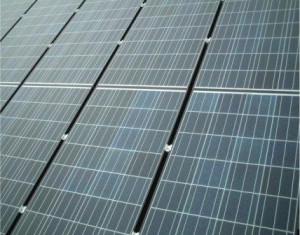Soon Solar Power Even in the Absence of Sunshine
 The system has been copied by scientists from plants. Plants use photosynthesis to convert sunlight into energy for their survival. Researchers copied from plants to create a breakthrough solar cell that can save solar energy for more widespread use far easier, less costly.
The system has been copied by scientists from plants. Plants use photosynthesis to convert sunlight into energy for their survival. Researchers copied from plants to create a breakthrough solar cell that can save solar energy for more widespread use far easier, less costly.
The team led by Tom Meyer, a University of North Carolina chemistry professor, researchers at UNC’s Energy Frontier Research Center devised a “dye-sensitized photoelectrosynthesis cell” (DSPEC) that receives incoming solar energy from solar panels and uses it to split a stored volume of water into its composites hydrogen and oxygen.
The reaction has, as its end product, hydrogen fuel that any system attached to the solar array can draw from as needed, the Science Recorder reported.
Each DSPEC has two chief components: a molecule and a nanoparticle. The process starts when the molecule absorbs the incoming sunlight and uses its energy to break down the water molecules and tear their electrons away. The nanoparticles then grab the electrons and ferry them away to make hydrogen fuel.
The oxygen dissipates into the air, while the hydrogen fuel stays in place. The solar energy that had initiated the water dissolution at the beginning is at this point stored within the hydrogen fuel’s atoms as chemical bonds.
These DSPEC cells, by storing solar energy in fuel form, solve one of solar arrays’ most fundamental problems- how to produce energy when the sun sets. Solar panels can convert substantial amounts of energy from sunlight during the day but the system is useless at night. A scaled-up DSPEC array, on the other hand, could theoretically generate ample volumes of fuel that will be around for use as needed once nightfall or cloud cover arrives.
This technology might fuel our future energy needs given the growing opinion that renewable energy will be the prime energy source in future.
Read more articles on Solar technologies

